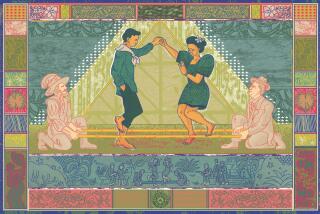Prejudice pales beside the power of vanity
- Share via
I read “Beauty and the Bleach” (July 26) with a chuckle. My girlfriends and I are all in our “of a certain age” years. Many of us are of Asian descent, and we are all worried about our skin. The article made gratuitous mentions of colonialism and prejudice. That’s a lot of hooey. There’s nothing controversial about it.
The article didn’t address the single most important reason we want to “whiten” our skin: aging. We want to look younger. It’s about vanity. We want our faces to be smooth and blemish-free as a baby’s bottom. Tight and spotless. It’s not a prejudice, it’s an ideal. If we could tan and keep our faces unlined and unblemished, we would.
One girlfriend, renowned for her youthful, porcelain visage, has invited me to swim in her pool -- at night. That’s the only time she’ll venture out in a swimsuit. See you poolside -- after sundown!
Gina Woolfolk
Torrance
*
Interesting article. Having a modest collection of Japanese Ukyo-e woodblock prints, Chinese Quan Yin sculptures and other Asian artifacts from centuries past, it would appear as though the ideal of feminine beauty in the Far East has generally leaned to a pale, alabaster-like complexion for quite some time, as the author suggests.
This tradition existed in Western societies until as recently as the 1920s. Until Coco Chanel made suntanning the ultimate in chic, along with bobbed hair, long ropes of pearls and skirts that grazed the knee, it was considered unseemly for a woman to enter the sun solely for the purpose of darkening her skin. In fact, women of the upper class, from the Baroque era into the early 20th century, generally ventured into the outdoors amply prepared with parasols, large veiled hats and, yes, long gloves. Your average 19th century picnic attire was not much different in appearance from that which would be worn to a formal afternoon reception. This was true both in Europe and the U.S.
Augustus Higginson
Santa Barbara


